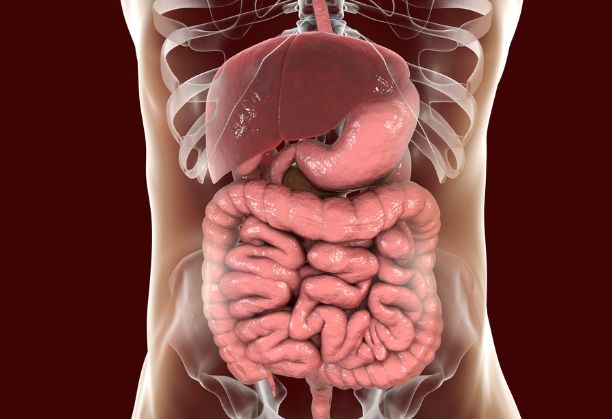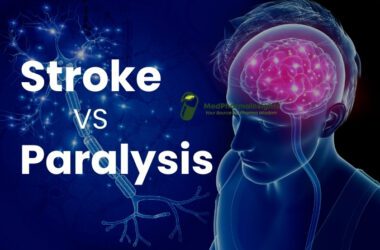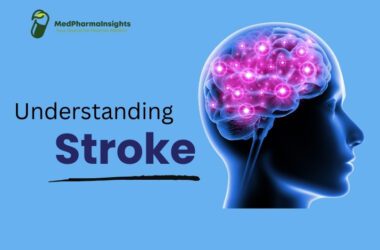Epilepsy is a chronic neurological disorder characterized by recurrent seizures. A seizure is a sudden, uncontrolled electrical disturbance in the brain that can cause a variety of symptoms, including changes in consciousness, behavior, movement, and sensation. By definition, epilepsy is not usually defined by a single attack. While epilepsy is a general word used to describe a variety of disorders that share a predisposition to have repeated epileptic attacks, epileptic seizures or attacks can be symptoms of a wide range of various diseases.
Epidemiology
After stroke, epilepsy is the second most common neurologic condition, affecting about 1% of the global population. Even though 80% of these patients can control their seizures with regular therapy, millions of people—500,000 in the USA alone—have uncontrollably high rates of epilepsy. The majority of epileptics—nearly 90%—live in underdeveloped nations. Seventy percent of cases of epilepsy respond to treatment. In developing nations, though, almost 75% of those afflicted do not receive the necessary therapy. In developed countries, annual new cases are between 0.4 and 0.7 per 1000 general population.
Etiology
Note: The word "idiopathic" comes from the Greek words "idios" (meaning "one's own") and "pathos" (meaning "suffering" or "disease"). It is used to describe a disease or condition whose cause is unknown.
- Idiopathic :A third of all new occurrences of epilepsy are most likely idiopathic epilepsies, which are epilepsies with a definite hereditary component.
- brain tumors: Brain tumors are responsible for the development of epilepsy in up to a third of patients between the ages of 30 and 50 years
- cerebrovascular diseases: Over the age of 50 years, cerebrovascular disease is the commonest cause of epilepsy, and may be present in up to half of patients.
Other important causes are:
- Head injury
- Alcohol abuse
- Cortical dysplasia
- Hypoxia or birth asphyxia
- Intracranial trauma during birth
- Metabolic disturbances
- Congenital malformations of the brain or infection
Pathophysiology
Note: A synapse is a junction between two nerve cells (neurons) that allows electrical or chemical signals to pass from one neuron to another. Synapses are essential for the transmission of nerve impulses throughout the nervous system.
Each neuron is linked to a number of other neurons by synapses, forming a complex network. Neurons generate a little electrical current that causes neurotransmitters to be released at the synaptic cleft, enabling communication between neurons. Neurotransmitters can be classified as either excitatory or inhibitory. As a result, the discharge of a neuron can either stimulate or inhibit the neurons that are attached to it. In contrast to an inhibited neuron, an excited neuron will cause the subsequent neuron to become active. The central nervous system processes, transmits, and conveys information in this way.
A typical EEG captures the integrated electrical activity produced by the neurons in the superficial layers of the brain, which discharge repeatedly at a low baseline frequency. Neurons that are harmed, wounded, or subjected to a chemical or metabolic shock may experience a shift in discharge pattern. Regular low-frequency discharges in epilepsy are replaced by high-frequency discharge bursts, which are typically followed by periods of inactivity.
Typically, an aberrant discharge from a single neuron has no clinical importance. An epileptic seizure cannot occur unless an entire population of neurons discharges abnormally and simultaneously. The epileptic focus is the region where the abnormal discharge is coming from.
Symptoms
The symptoms of epilepsy vary depending on the type of seizure. There are two main types of seizures: focal seizures and generalized seizures.
Focal seizures, also known as partial seizures, begin in one area of the brain and can affect consciousness, movement, sensation, or behavior. Generalized seizures begin on both sides of the brain and affect the entire body.
Some common symptoms of focal seizures include:
- Jerking or stiffening of the muscles on one side of the body
- Sensory changes, such as flashing lights, strange smells, or tingling in the body
- Changes in consciousness, such as staring or confusion
- Changes in behavior, such as repetitive movements or speaking
Some common symptoms of generalized seizures include:
- Tonic-clonic seizures (grand mal seizures): These seizures cause the entire body to stiffen and jerk, followed by a period of unconsciousness.
- Absence seizures (petit mal seizures): These seizures cause brief lapses of consciousness, usually lasting a few seconds.
- Atonic seizures (drop attacks): These seizures cause the muscles to suddenly relax, causing the person to fall to the ground.
- Myoclonic seizures: These seizures cause brief, sudden jerks of the muscles.
Clinical manifestations or types
A seizure’s clinical presentation is based upon the focal point’s location and the routes that facilitate its propagation. Visit our blog Types of Epilepsy: A Comprehensive Guide to study types of seizure or epilepsy .













